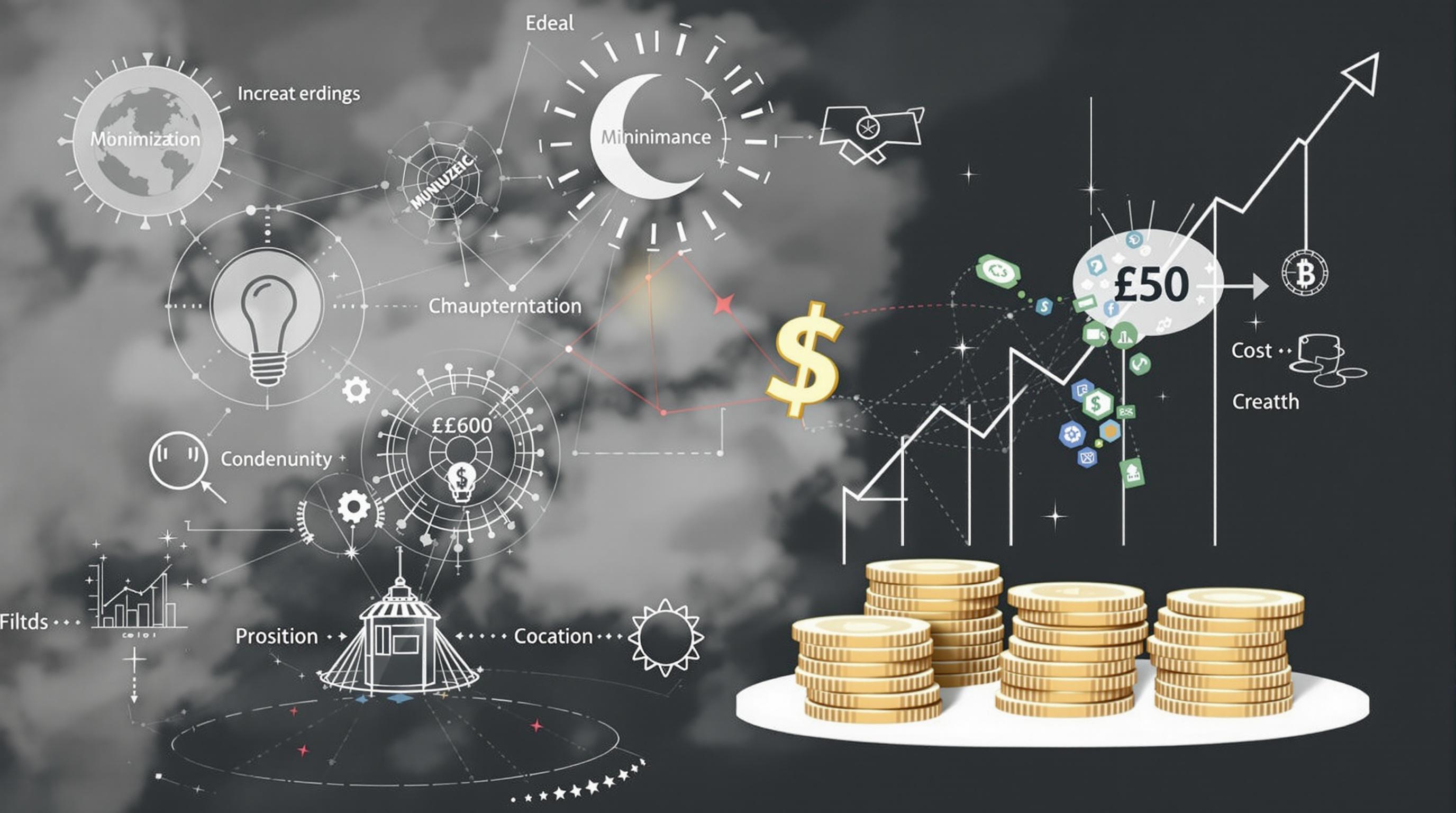Related Articles
- Unconventional Wisdom: Exploring Surprising Influencers Shaping Consumer Trends in 2023's Niche Ecosystems
- Beneath the Surface: Discovering the Unlikely Impact of Micro-Communities on 2023's Consumer Landscape
- Unexpected Catalysts: Exploring the Surprising Forces Influencing Subculture Trends in 2023
- Unmasking Influences: The Unlikely Narratives Behind Today's Obscure Market Trends and Consumer Choices
- The Paradox of Generosity: How Giving Can Lead to Unexpected Financial Gains in Competitive Markets
- The Unexpected Cost of Silence: How Communication Gaps Drain Resources in Organizations
The Paradox of Generosity: How Giving Can Lead to Unexpected Financial Gains in Competitive Markets
The Paradox of Generosity: How Giving Can Lead to Unexpected Financial Gains in Competitive Markets
The paradox of generosity reveals that giving can often lead to unforeseen financial benefits, especially in competitive markets. This article explores various ways generosity fosters stronger networks, aligns values with profit, and ultimately cultivates unexpected financial gains.
The Generosity Paradox Explained
At first glance, the idea that giving can result in greater financial returns seems illogical. After all, businesses are driven by profit margins, and the instinct is to hoard resources for survival. However, research suggests that altruistic behaviors can create a ripple effect that enhances one's financial prospects. Studies have shown that companies engaged in philanthropy often experience better brand loyalty and increased customer satisfaction, with the 2021 Global Corporate Social Responsibility Report indicating that 65% of consumers are willing to pay more for products from socially responsible companies.
Generosity in Competitive Markets
In a highly competitive market, companies are constantly looking for an edge over their rivals. Interestingly, generosity can be that edge. When businesses contribute to social causes or engage in community activities, they establish a positive image that resonates with customers. This is not merely a coincidence; data from the Harvard Business Review indicates that companies known for their charitable giving tend to attract better talent and retain employees longer. In fact, according to a study published in the Journal of Business Ethics, employees are 55% more likely to feel inspired to work hard when they believe their company is socially responsible.
Stories of Success: Real-world Examples
Let’s step away from the abstract for a moment and dive into the storytelling aspect of generosity. One of the most notable examples is TOMS Shoes. Founded by Blake Mycoskie in 2006, the company adopted a unique “One for One” program, which donates a pair of shoes for every pair sold. TOMS quickly became a household name, and not just because of their trendy footwear; their brand was synonymous with social good. By 2020, they had donated over 100 million pairs of shoes worldwide, demonstrating how a commitment to generosity can bolster both brand reputation and profits.
Humor and Generosity
Now, let’s add a pinch of humor into the mix—because, let’s face it, who doesn’t love a good laugh? Imagine if generosity were like a credit card—always offering rewards without the interest! “Hey, look at me, I started a charitable foundation! And what’s this? A new yacht!” While the absurdity is laughable, the truth is that generosity does create social capital that can be leveraged for future profits. Just remember: balance is essential. After all, a “generous diva” could be kicked out of the boat if she’s not careful!
The Science Behind Generosity
Numbers and scientific backing make the case for generosity even stronger. Researchers from the University of Notre Dame conducted a study that demonstrated individuals who donate to charity can experience a psychological boost that translates into improved financial outcomes. In their studies, participants who engaged in acts of generosity were found to perform better in tasks requiring creativity and problem-solving, yielding an average increase of 25% in outputs. This means giving not only uplifts your spirit but could potentially lead to more significant financial restitution.
Total Return on Investment: The Generosity Factor
The concept of ROI isn't limited to financial investments alone; we can apply it to generosity. Generosity ships out a return that can range from social connections to direct financial gains. For example, a small local restaurant serving free meals during hard economic times can create goodwill and loyalty. Those diners might return, bringing friends and leaving tips that exceed their initial meal cost, thus generating an impressive buzz. Marketing experts call this “community development marketing,” where the social return on investment can end up being tenfold.
The Power of Networking
One of the subliminal yet powerful aspects of generosity is networking. In competitive markets, networks are everything. Think of it this way: by donating to causes aligned with your industry, you are networking without the exchange of business cards. Take the case of Google, which is known for its widespread philanthropic efforts. These initiatives have not only fostered goodwill among consumers but have also opened the doors to collaborations that enhance their market position.
Financial Gains from Philanthropy
Let’s take a moment to analyze some concrete instances where philanthropy translated into substantial financial gains. Take the tech industry, for example. Companies like Microsoft, founded by Bill Gates, allocate vast amounts into charitable foundations. Gates noted that philanthropy had multiple financial benefits, including creating a favorable regulatory environment and fostering innovation in health and education sectors. Research suggests that for every dollar spent on philanthropy, businesses can expect to see a return of approximately $3 within the next five years. Now, who wouldn’t want to turn a $1 investment into a $3 return?
Generosity and Consumer Loyalty
In today’s fast-paced market, consumer loyalty is a goldmine. According to the 2022 Edelman Trust Barometer, 56% of consumers worldwide will choose to buy from a brand they trust, especially in tough economic times. If a company demonstrates its commitment to giving back, it garners loyalty that translates into repeat customers. Consider Method Products, a brand known for its eco-friendly cleaning supplies. During its early years, it dedicated funds to environmental initiatives, quickly capturing the hearts of consumers and positioning itself as a market leader.
Mistakes to Avoid in Generosity
With great power comes great responsibility—this also applies to generosity. While it's tempting for companies to jump on the philanthropic bandwagon, a half-baked effort can do more harm than good. For instance, consider when a company launches a charity campaign tied explicitly to its products without truly caring about the cause. This approach often comes off as insincere, risking consumer backlash. Thus, authenticity should be the bedrock of any generous endeavor; consumers can sniff out “performative” actions in no time!
Conclusion: Transforming Generosity Into Financial Success
The remarkable paradox of generosity suggests that by investing in the well-being of others, whether as an individual or a company, one can foster an environment that promotes long-term financial success. It’s a cyclical relationship: the more you give, the more you gain. Whether you’re a young entrepreneur seeking to make your mark or an established business looking to innovate, the message resonates across demographics: Give, connect, build, and watch your financial landscape transform in surprising ways.
In conclusion, embracing generosity doesn't just elevate societal wellbeing; it can also enhance your financial prospects in competitive markets. So, the next time you ponder whether to donate or support a cause, think of it as an investment in your future—not just in social goodwill but also in unforeseen financial rewards.





